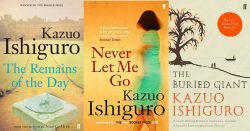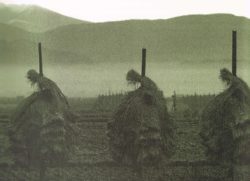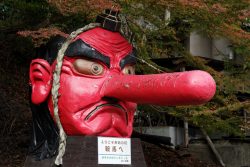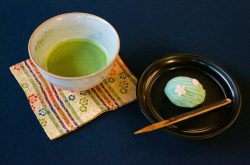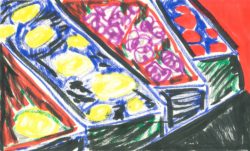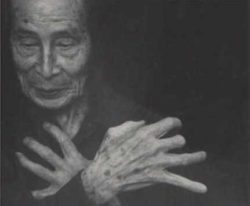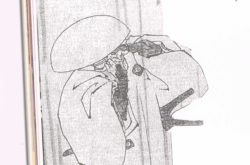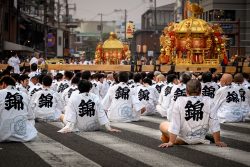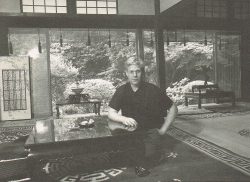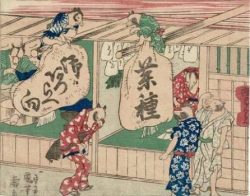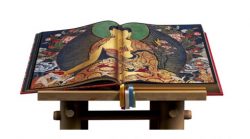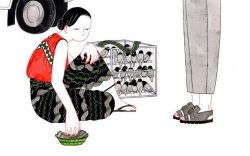Found in Translation: Teaching the art of the Japanese garden
Portland Japanese Garden’s Waza to Kokoro: Hands and Heart intensive training seminar to share with gardeners outside of Japan the skills, knowledge, techniques and philosophies that have resided mainly in the hands and hearts of Japanese gardeners for centuries.
Read MoreMeld
Growing up in a rural New England suburb, the only thing different about our family was that we ate rice every night and that our ancient Taiwanese grandfather would practice tai chi on the lawn.
Read MoreMonpan Shokudo
Monpan Shokudo is a homey and creative restaurant in Kyoto serving Mongoru Pan—Mongolian bread—alongside fusion recipes from around the world. There’s a particular character about Monpan, one that is difficult to describe, but that emerges through the life story of its co-owner, Haruhisa Kato.
Read MoreKazuo Ishiguro on Asian-British Writers
“Apart from a transient business community, there’s nothing in England that could be called a Japanese society. In addition, when I arrived in 1960, there were very few Japanese in England at all. Therefore, as I grew up, the problem of which society I belonged to never arose. I now accept the fact that I am a mixture, a cultural compound.”
Read MoreKYOTOGRAPHIE 2019: A review
KYOTOGRAPHIE has been successful partly because photographic images have the ability to transcend linguistic differences through ishin denshin: wordless communication, heartstrings vibrating in harmony.“Vibe,” which situates ishin denshin within a specific locale, is a fitting theme for the photography festival, now in its seventh year.
Read MoreLandscape of Memory
If one thinks of Japanese civilization as a great tree, the most brilliant blooms and succulent fruits adorned branches represented by the cities Nara and Kyoto. To fully appreciate those flowers and fruits one must follow the course of investigation right to the roots. These are firmly set in the soil of the inaka, approximately in English, ‘countryside.’
Read MoreTengu
Osamu Dazai meditates on the haiku of Bashô, Bonchô, and Kyorai.
Read MoreConsequential Legacies
I have come to believe that she is channeling Toscanini with her hands. Equally, I’m firm in the conviction that she is channeling a fabled Persian songstress with her soul.
Read MoreThe Other Japan: Voices Beyond the Mainstream
The Other Japan should be read by all students seeking a clearer view of Japan’s rich demographic landscape.
Read MoreTea and Women’s Empowerment in Modern Japan
“Coffee–table” books about tea tend to offer pristine views of paradise and bowls of world peace. Page after page of steamy shadows and shadowy steam, dewy landscapes fashioned by gods with impeccable taste…Enough!
Read MoreLemon
An impenetrable curse lay heavy on my heart. Call it an uneasiness, call it ill humors—like a hangover after drinking, you drink every day and there comes a time when it all might as well be a hangover. Well, that time had come.
Read MoreA Child of All Time: Butoh Dancer Ohno Kazuo at 98
“The physical form I assume now is but the fruit of what I’ve inherited from those who have existed before me. What, you might ask, has become of our ancestors’ ideas and emotions? Where do you suppose our creativity springs from? There’s no way that it springs forth from our finite and limited knowledge of life.”
Read MoreEngawa
I slide my feet along the floor, the gray, smooth, one-hundred-and-fifty-year-old floor of plaster of lime and clay and gravel. I think of all of the feet, the generations of feet, that have shuffled across it, lived on it, of the people who’ve sipped tea standing in the same spot.
Read MoreCloudburst by Fujisawa Shuhei
In the daytime, Kakichi worked as a knife sharpener. He made his Edo rounds carrying a box of grindstones and files — the tools of his trade — and he sharpened kitchen knives, sickles, and scissors. Occasionally he was asked to set the teeth of a saw, and he carried the files for that purpose. And when a promising house caught his eye in the course of his rounds, he’d pay that house another visit in the dead of night.
Read MoreKyoto’s Festivals: Twelve Months of Everyday Transience
In Kyoto, one grows accustomed to the ongoing round of festivals at Buddhist temples and Shinto shrines—it’s said that you could attend at least one every day here, throughout the year. But the word ‘festival’ doesn’t quite capture the spirit of the majority of these events. With some notably lively exceptions, they are mostly rather formal annual ceremonies and rituals…
Read MoreKJ Spring 2019 Reads: Titles from Tuttle
As part of their 70th-year anniversary celebrations, KJ has teamed up with Tuttle Publishing, the Asia specialist, for this four-part series.
Read MoreConcretizing the Japanese Dream: Alex Kerr on State-sponsored Vandals, True Romance and Contemporary Genii
“A revolution of a sort must take place but I am not at all sure that will happen in Japan. Part of the problem in Japan is that in some ways it’s very comfortable. Japan needn’t really do anything and could go right on as it is and no one would notice.”
Read MoreOn Learning Pottery in Japan
We never talked about our own work in aesthetic terms. I never asked, and they never volunteered. We never talked about the “significance” of our work, or its place in society. There seemed to be no place for the pained self-consciousness that afflicts so many American potters and students.
Read MoreTanuki! Tanuki!
The popularity of the tanuki has much to do with its humorous and winsome image. With its plump body, awkward movements and simple-minded trickery, the tanuki presents a comical, safe and manageable impression compared to the cunning fox, the other trickster.
Read MoreA Visual Treasure of Wisdom
By all standards, Murals of Tibet is not an ordinary book of Tibetan art history: it is itself a monument to Tibetan art.
Read MoreSar Kaley (these so-called lucky birds)
No perfect way to earn merit in the end. Even something as simple as a bird becomes complicated. Yet still those bamboo cages at the foot of the stairs, a few kyat, and you’re compelled to have this thing all threadbare and shivering in our hands. And what was the wish again?
Read More



